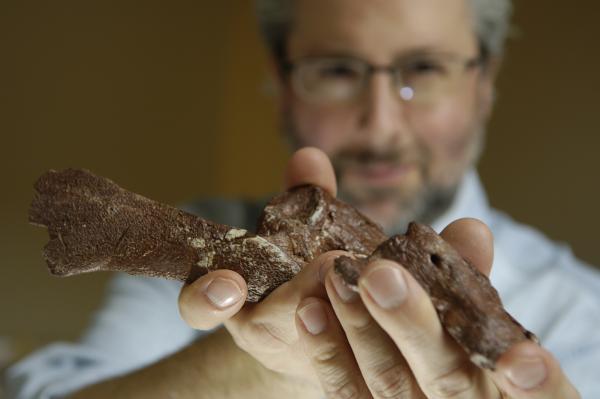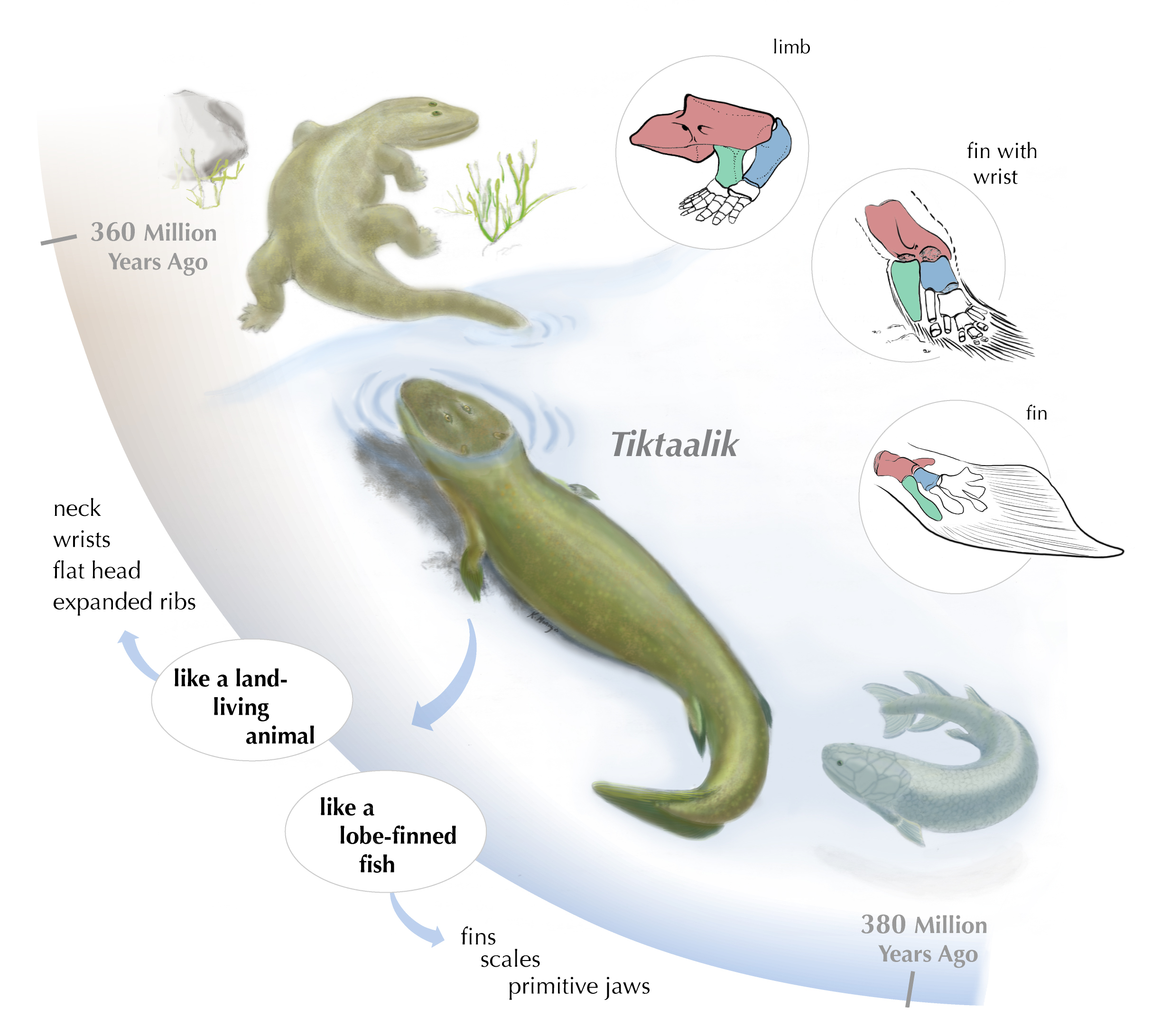Transitional forms are sometimes touchy subjects to biologists because the notion is used in a bad way by detractors; opponents of evolution will speculate why there is no half-formed lung because they are using the term 'transitional' in a non-scientific way; they don't really understand the concept of gradualism in evolution and because there are arguments in the scientific community about phyletic gradualism or punctuated equilibrium, quantum evolution, punctuated gradualism, etc., evolution detractors take that to mean it must be a weak idea rather stronger because of the debate, but very little science could ever be done without retrodictions, including geology, climate science and cosmology.
390 million years ago all vertebrates were fishes but 30 million years later there were four-legged creatures walking on land and they retained fishlike qualities. It makes sense that a transitional creature, a missing link, would be right in the middle of that period. Science says such a creature absolutely did exist much the way 3 will exist between 2 and 4 but that doesn't mean a fossil survived. We see fossils every day so we take them for granted but a fossil is actually a rare thing because the process is so elaborate. Anti-science ideologues will use the honesty of science against itself by claiming the lack of a fossil in our hands right this minute invalidates what we know must be true because they don't understand that a complete fossil record is well, 'miraculous'; most life is soft-bodied and rarely survives the fossilization process.
But science is sometimes about long shots so Neil Shubin and colleagues set off to Ellesmere Island in the Canadian Arctic, convinced without rational hope that freshwater sediments would yield what they sought - a needle in a haystack proposition, if the haystack were on Mars. Outside research, I'll spend two hours writing this article but Shubin spent five years trekking off to hunt around in the water. In Canada.

Neil Shubin, chairman of Organismal Biology and Anatomy at the University of Chicago, with part of a fossil from Tiktaalik roseae. Credit: Dan Dry and University of Chicago.
But after five years they found it. A 'fishapod', Shubin later joked, because it had a skull like a crocodile, sturdy ribs - and a neck, the only fish to have one. He called it Tiktaalik roseae, opting for Inuktitut rather than Latin ('big, shallow-water fish') and roseae as some sort of reference to one of the expedition's financiers (presumably not the National Science Foundation or the National Geographic Society - does anyone know who the mystery donor is? I couldn't find a name).
The most fascinating thing about Tiktaalik is that it did not live on land (it had gills) but could breathe air above the surface and its bone structure was already partway between leg and fin - and instead of a 30 million year gap between fish and land creature, there is now 15 million.

Tiktaalik roseae, the intermediate between fish that lived in water and animals that evolved to walk on land. It has the fin of a fish but could 'prop' its bodyup, much like a limb. Credit: Kalliopi Monoyios, University of Chicago.
Obviously there is another transitional creature between them and somewhere in the sediment there may be a fossil that can be found - we have enough haystacks, we just need more scientists willing to search for needles.
So we know what Tiktaalik means to biologists but what does it mean to you and me? It means science works. Shubin and colleagues got lucky but it was a special sort of luck. Evolution had predicted the existence of Tiktaalik and science said not only that it must have existed but that if a fossil remained, it would exist in a specific sort of place; freshwater and in sediment of a somewhat narrow time period, all predicted quite accurately it turned out. Finds like this are a mix of biology, paleontology and geology but they all have a common foundation in the scientific method.
So as we go into February and Darwin's bicentennial we need to keep in mind that evolution is not just about a man, even one who had 'the greatest idea anyone ever had' - it's about using science to explain the world around us and about man's quest for answers.
More Show Me The Science Month - 30 Days Of Evolution Blogging:
Day 5: Hunting for Genes that Keep Species Separate
Day 4: Deciphering the Tracks of Evolution in Our Genomes
Day 3: Size Matters for Plants Too
Day 2: Putting Evolution in Reverse
Day 1: Primitive Dinosaur Feathers




Comments